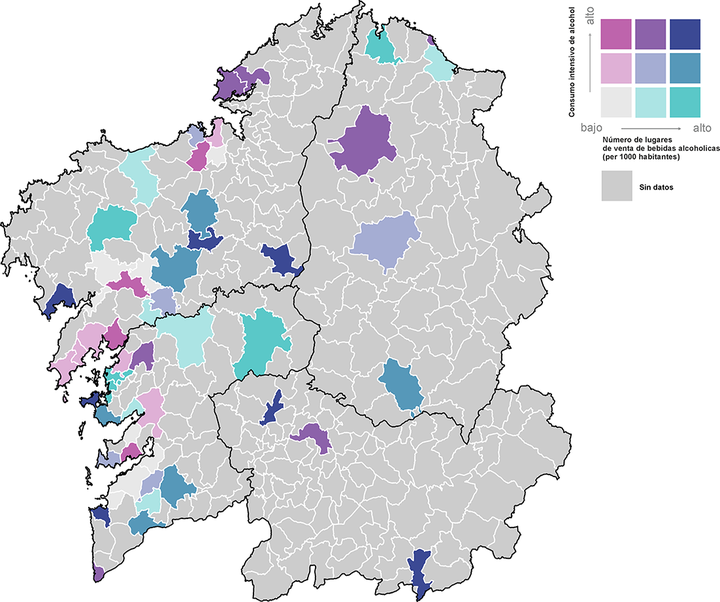
Resumen
Objective: To assess the influence that alcohol outlet density, off- and on-alcohol premises, and alcohol consumption wield on the consumption patterns of young pre-university students in Galicia (Spain). Method: A cross-sectional analysis of a cohort of students of the University of Santiago de Compostela (Compostela Cohort 2016) was carried out. Consumption prevalence were calculated for each of the municipalities from the first-cycle students’ home residence during the year prior to admission. The association with risky alcohol consumption (RC) and binge-drinking (BD) was assessed with a logistic model considering as independent variables the municipality population, alcohol outlet density of off- premises, density of off- and on- premises and total density of both types of premises in the municipality. Results: The prevalence of RC was 60.5% (95% confidence interval [95%CI]: 58.4-62.5) and the BD was 28.5% (95%CI: 26.7-30.2). A great variability was observed according to the municipality of provenance. The multivariate logistic model showed municipalities with a density of 8.42-9.34 of both types of premises per thousand inhabitants presented a higher risk of RC (odds ratio [OR]: 1,39; 95%CI: 1.09-1.78) and BD (OR: 1.29; 95%CI: 1.01-1.66). Conclusion: These data suggest the importance of including environmental information when studying alcohol consumption. Knowing our environment better could help plan policies that encourage healthier behaviour in the population.